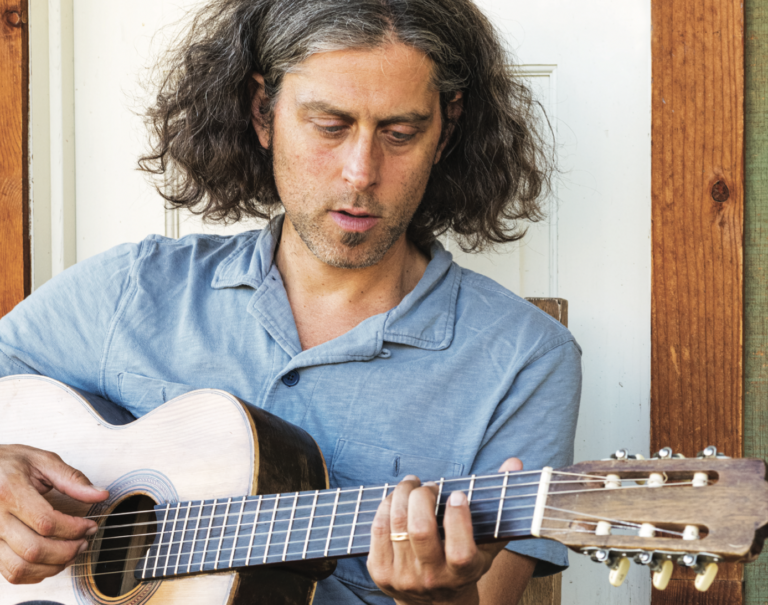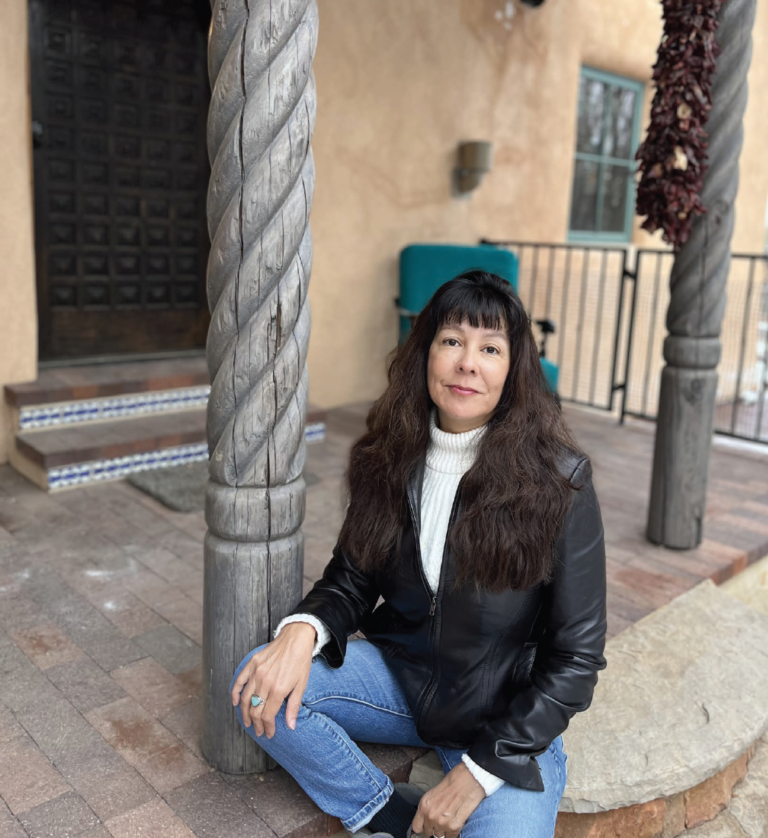GENERALLY SPEAKING, it is not that easy to run into someone who builds from-scratch, really, really fine guitars. To even begin to do that, you need to be taught by someone who knows how to do that. Like a medieval guild. (Auto-didacts need not apply.)
To put this into perspective: The wood from the tree has to be a certain age, a specific type, and from a particular place. Then there is the matter of how to cut it down: with care and humility, not hostile intent like firewood. The intimacy extends to every stage of construction until the final strings are set and then played (maybe after sitting six months). These guitars sound better with time and sometimes, weirdly, auto-adjust in tandem with the player’s skill and vibe.
As luck would have, we did run one a member of this rarefied guild here in town. Keith’s Santa Fe office, shop, and studio are in his garage. It is a phantasmagoric place filled with oddly-shaped pieces of wood, silver strings, bridges, necks, moisture detection dials, varnishes, jigsaws, glues, braces chisels, and other neatly arranged imponderables befitting a wizard.
As I leave, he picked up one of the close-to-finished but still-in-process works, a slender, white pine masterpiece. He lifted it towards the heavens and started to strum: “I am really not a very good guitar player.” He meant it. Then he beamed the smile of the day. He was still playing as I made my way out.
What brought you here?
St. John’s. When I was a kid, my education was all college-bound, all academic. I kind of reacted to that and went into making stuff: building houses, cabinets, and furniture. Once I landed on guitars, I started wondering about intellectual life. So I went back to school, to St. John’s, which I loved, but then realized it was kind of shallow, just intellectual. I keep going back and forth between these two things. But I think I finally figured out that it is just a false dichotomy. I like both things.
How do you learn how to make a guitar?
In Europe, there are guilds. Here, I actually saw an ad in the back of a magazine for a course where you live in yurts in Vermont. A six-week course about guitar. I went.
Did you know if you were going to be good at this thing?
I played guitar. And I made furniture. I had always separated the playing from the woodworking. And then I thought, “These are made of wood. I guess I can do this.” In those days, the late 70s, there weren’t that many of us doing it. Now, there are thousands.
What kind of wood do you use?
Soundboards are usually conifers – spruces, cedars, redwoods, and deciduous trees. Hardwoods are usually on the back and sides. That’s super basic. How you cut or split the wood is equally as important. You can have a beautiful piece of wood that’s cut radially so it’s not very stable. There’s attributes of wood, its density, how it moves. So that’s a new thing I’ve gotten into – the story of where the wood came from.
WANT TO READ MORE? SUBSCRIBE TO SANTA FE MAGAZINE HERE!
Photo Andy Johnson








